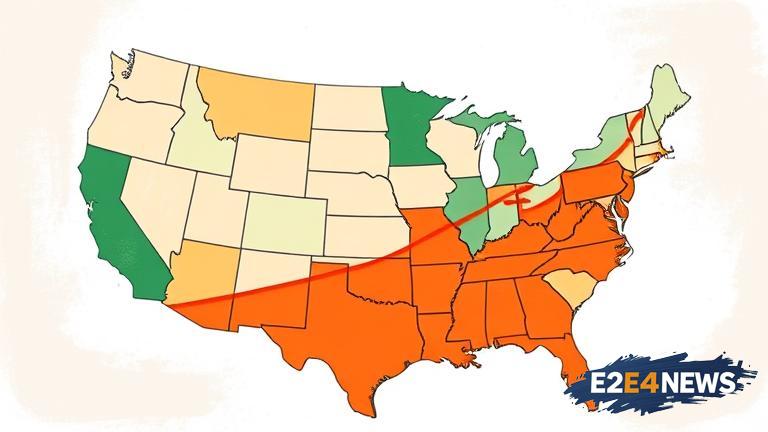The United States has been experiencing a slowdown in population growth, with some areas witnessing a decline in population influx. This trend is attributed to various factors, including a decrease in birth rates, an increase in death rates, and a shift in migration patterns. According to recent data, the population growth rate has slowed down to its lowest level in over a century. This decline is more pronounced in certain regions, such as the Northeast and Midwest, where the population has been decreasing due to out-migration. On the other hand, some areas like the South and West continue to experience population growth, albeit at a slower rate. The slowdown in population growth has significant implications for the economy, housing market, and social security. A declining population can lead to a reduction in the workforce, resulting in a shortage of skilled labor and increased burden on social security systems. Furthermore, a decrease in population can also impact the housing market, leading to a surplus of homes and a decline in property values. The reasons behind the slowdown in population growth are complex and multifaceted. One major factor is the decline in birth rates, which has been attributed to a decrease in fertility rates among women. Additionally, an increase in death rates, particularly among older adults, has also contributed to the slowdown. Migration patterns have also played a significant role, with some areas experiencing a decline in international migration. The COVID-19 pandemic has also had a profound impact on population growth, with many people opting to move to areas with lower costs of living and better job opportunities. The slowdown in population growth has also raised concerns about the long-term sustainability of social security systems. With a declining population, there will be fewer workers to support the increasing number of retirees, leading to a strain on the system. To address this issue, policymakers will need to implement strategies to boost population growth, such as increasing immigration and encouraging families to have more children. Moreover, investing in education and job training programs can help to attract and retain skilled workers. The slowdown in population growth also highlights the need for more efficient and effective use of resources, particularly in areas with declining populations. This can involve investing in infrastructure, such as transportation and housing, to make these areas more attractive to potential residents. In conclusion, the slowdown in population growth is a complex issue with far-reaching implications for the US economy and society. Understanding the underlying factors and implementing effective strategies will be crucial to addressing this challenge and ensuring the long-term sustainability of the country. The data also shows that the population growth rate is slowing down in many countries around the world, including Japan, Italy, and Spain. This global trend highlights the need for international cooperation and knowledge sharing to address the challenges posed by declining population growth. As the US continues to experience a slowdown in population growth, it is essential to monitor the situation closely and develop effective policies to mitigate the negative impacts. By doing so, the country can ensure a sustainable and prosperous future for its citizens. The slowdown in population growth also raises questions about the impact on local communities and the potential for urbanization. As people move to cities in search of better job opportunities and higher standards of living, there is a risk of urban sprawl and strain on local resources. To address this issue, policymakers will need to invest in urban planning and development, including the creation of affordable housing and transportation systems. Additionally, there is a need to promote rural development and provide incentives for people to stay in or move to rural areas. By taking a comprehensive approach to addressing the slowdown in population growth, the US can minimize the negative impacts and create a more sustainable and equitable future for all its citizens.





